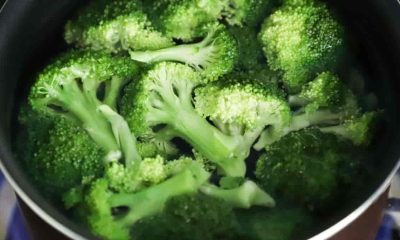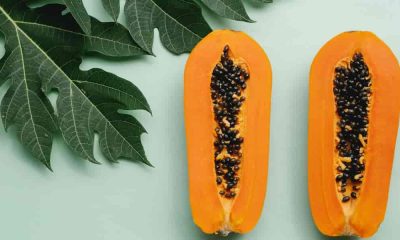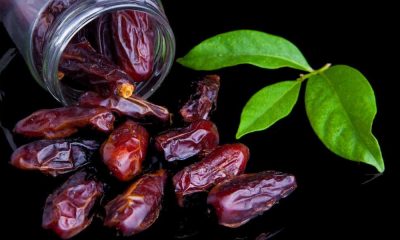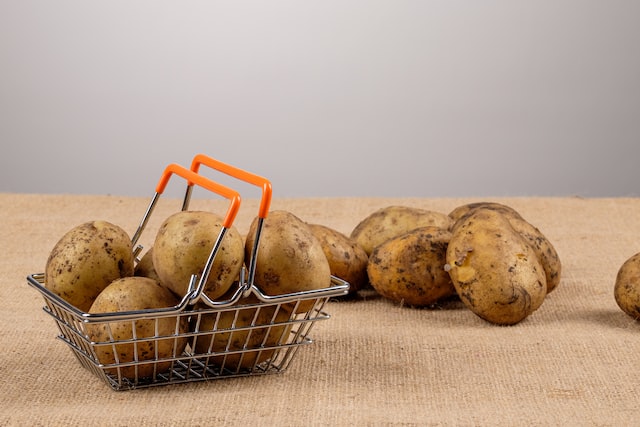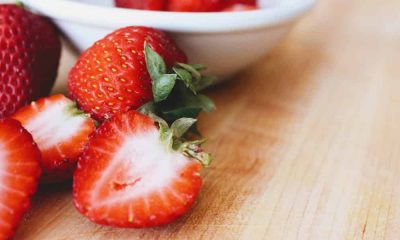Nutrition
Is Pasta Bad for Weight Loss? Debunking the Myths
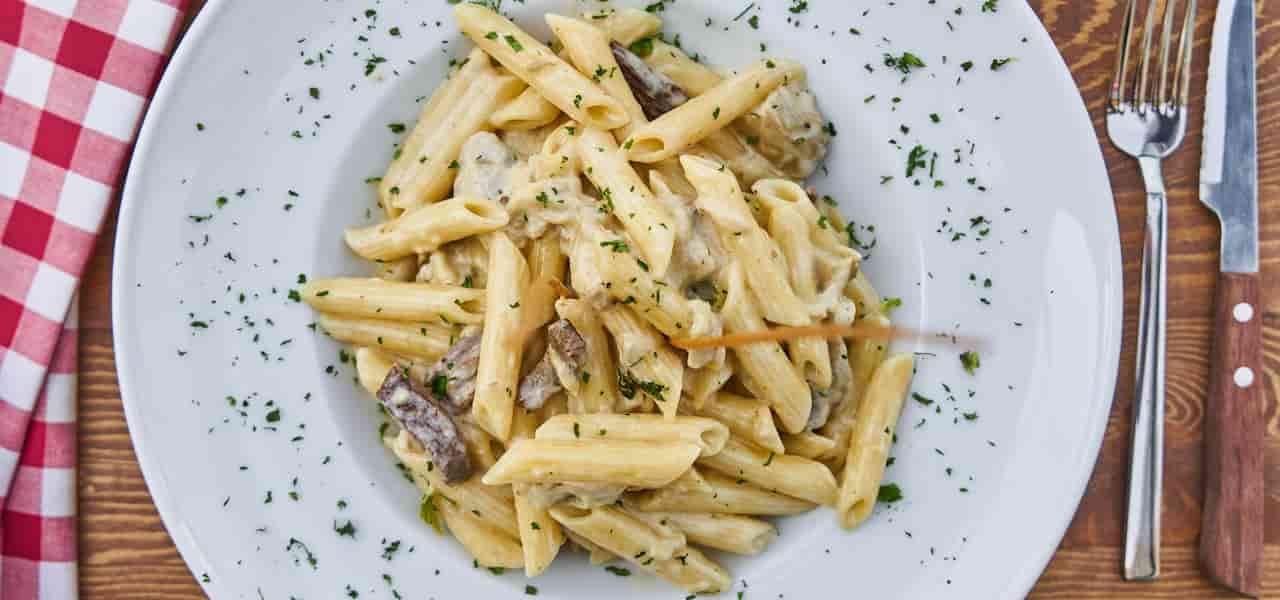
Here is your complete guide to pasta bad for weight loss
Introduction To pasta bad for weight loss
Have you ever wondered if your favorite pasta dishes are hindering your weight loss goals? The relationship between pasta and weight loss has been the subject of much debate. In this article, we’ll explore the truth behind the myths surrounding pasta and its impact on weight loss. By debunking common misconceptions and providing evidence-based information, we aim to help you make informed choices about including pasta in your weight loss journey.
Nutrition Facts of Pasta
Below is a table showcasing the approximate nutritional values for a 1-cup (140g) serving of cooked pasta:
| Nutrient | Amount |
|---|---|
| Calories | 200-220 |
| Carbohydrates | 40-45g |
| Protein | 7-8g |
| Fat | 1-2g |
| Fiber | 2-3g |
| Calcium | 10-20mg |
| Iron | 1-2mg |
| Potassium | 50-70mg |
| Sodium | 0-5mg |
| Vitamin B6 | 0.1-0.2mg |
| Folate | 40-60mcg |
| Thiamin (Vitamin B1) | 0.1-0.2mg |
| Riboflavin (Vitamin B2) | 0.1-0.2mg |
Please note that the nutritional values may vary depending on the type of pasta and cooking method. It’s always recommended to check the specific product labels for accurate information.
The Pasta and Weight Loss Connection
Understanding Pasta
Pasta is a staple in many cuisines worldwide, ranging from classic spaghetti to comforting macaroni and cheese. Before delving into the effects of pasta on weight loss, it’s essential to understand what pasta is. Simply put, pasta is a type of noodle made from durum wheat semolina or other grains. It comes in various shapes, sizes, and textures, each with its own culinary appeal.
There’s a prevailing belief that pasta inherently leads to weight gain, but this misconception fails to account for the bigger picture.
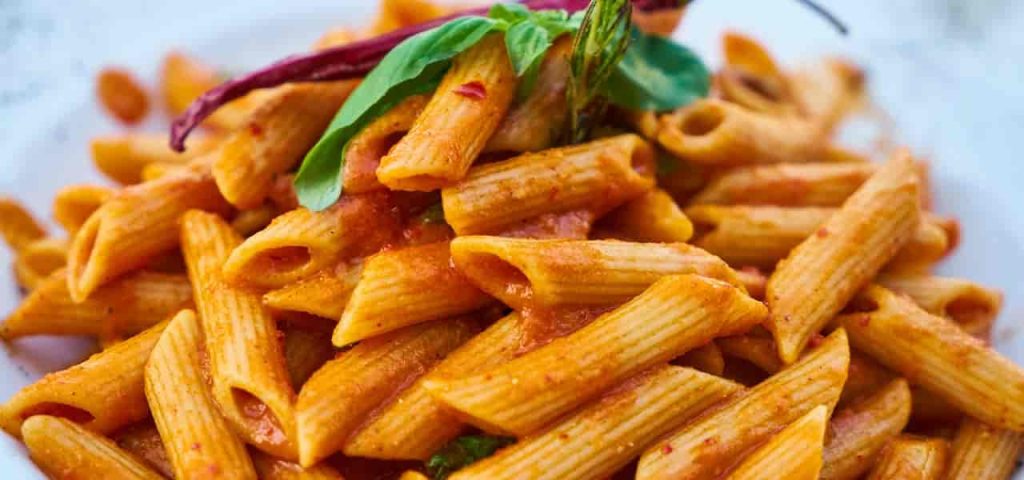
The Role of Carbohydrates
Carbohydrates are one of the three macronutrients required by the body for energy. They play a crucial role in fueling our daily activities. Carbohydrates can be classified into two types: simple and complex. Simple carbohydrates are quickly digested, leading to a rapid rise in blood sugar levels, while complex carbohydrates provide sustained energy due to their slower digestion.
Pasta falls under the category of complex carbohydrates, providing a steady release of energy without causing extreme blood sugar fluctuations.
Nutritional Value of Pasta
Contrary to popular belief, pasta offers several nutritional benefits. It is a significant source of complex carbohydrates, providing energy and fuel for our bodies. Additionally, pasta contains dietary fiber, which aids digestion, promotes satiety, and helps regulate blood sugar levels.
When it comes to portion control, it’s crucial to understand realistic serving sizes. A standard serving of cooked pasta is about one cup, which equates to approximately 200-220 calories. Proper portioning ensures that pasta can be part of a balanced diet without sabotaging your weight loss efforts.
Nutrition Facts: Pasta vs. Rice
Below is a comparison table showcasing the approximate nutritional values for a 1-cup (140g) serving of cooked pasta and cooked white rice:
| Nutrient | Pasta (Cooked) | White Rice (Cooked) |
|---|---|---|
| Calories | 200-220 | 205-225 |
| Carbohydrates | 40-45g | 45-50g |
| Protein | 7-8g | 4-5g |
| Fat | 1-2g | 0.5-1g |
| Fiber | 2-3g | 1-2g |
| Calcium | 10-20mg | 10-20mg |
| Iron | 1-2mg | 0.5-1mg |
| Potassium | 50-70mg | 35-55mg |
| Sodium | 0-5mg | 0-5mg |
| Vitamin B6 | 0.1-0.2mg | 0.1-0.2mg |
| Folate | 40-60mcg | 5-15mcg |
| Thiamin (Vitamin B1) | 0.1-0.2mg | 0.1-0.2mg |
| Riboflavin (Vitamin B2) | 0.1-0.2mg | 0.1-0.2mg |
Please note that the nutritional values provided are approximate and may vary depending on the specific type and brand of pasta or rice, as well as the cooking method. Additionally, whole grain varieties of pasta and brown rice offer higher fiber content and additional nutrients compared to refined versions. It’s always advisable to refer to the product labels for accurate and detailed information.
Debunking the Pasta Weight Loss Myths
Myth #1: Pasta is High in Calories
One common misconception is that pasta is high in calories, making it unsuitable for weight loss. While pasta does contain calories, it’s important to consider the serving size and preparation method. In comparison to other common foods, pasta can be a reasonable calorie choice. For instance, a one-cup serving of cooked pasta typically contains fewer calories than a similar-sized serving of rice or potatoes.
Myth #2: Pasta Causes Rapid Weight Gain
The notion that pasta causes rapid weight gain stems from the misconception that all carbohydrates are equal in their effect on body weight. Weight gain occurs when there is a calorie surplus, meaning you consume more calories than your body needs. The key to weight loss is maintaining a calorie deficit, regardless of the specific food consumed.
By practicing portion control and incorporating pasta into a calorie-controlled diet, you can enjoy your favorite pasta dishes without impeding your weight loss progress.
Myth #3: Pasta is Unhealthy and Fattening
Pasta itself is not inherently unhealthy or fattening. The healthiness of a diet depends on the overall quality of the foods consumed. It’s essential to consider the ingredients, sauces, and toppings used in pasta dishes. Opting for whole grain or whole wheat pasta varieties can increase the fiber content and provide additional nutrients.
To create healthier pasta meals, focus on incorporating nutrient-dense ingredients such as lean proteins, vegetables, and healthy fats. This will enhance the nutritional profile of your dish while ensuring a well-balanced and satisfying meal.
Making Pasta Work for Weight Loss
Moderation and Portion Control
The key to incorporating pasta into a weight loss plan is moderation and portion control. While pasta can be part of a healthy diet, consuming excessive amounts can hinder weight loss efforts. Be mindful of portion sizes and aim for a balanced plate that includes pasta along with protein, vegetables, and healthy fats. Consider using smaller plates or bowls to help control serving sizes and prevent overindulgence.
Pairing Pasta with Nutrient-Dense Foods
To enhance the nutritional value of your pasta dishes, pair them with nutrient-dense ingredients. Include lean proteins like grilled chicken, turkey, or seafood to add satiety and support muscle growth. Vegetables such as spinach, broccoli, or tomatoes can provide essential vitamins, minerals, and fiber. Incorporating healthy fats from sources like olive oil, avocado, or nuts can contribute to a feeling of fullness and improve the absorption of fat-soluble nutrients.
By creating balanced and flavorful pasta dishes, you can enjoy the satisfaction of a comforting meal while nourishing your body with essential nutrients.
Incorporating Exercise and Physical Activity
While diet plays a significant role in weight loss, incorporating regular exercise and physical activity is crucial for overall health and sustainable weight management. Engaging in aerobic exercises, strength training, or activities that you enjoy can help burn calories, increase muscle mass, and boost your metabolism. Pairing exercise with a well-balanced diet that includes pasta can optimize your weight loss journey and promote overall well-being.
Best Healthy Pasta Recipes
Below are some delicious and nutritious pasta recipes that can be enjoyed as part of a healthy diet:
| Recipe | Description |
|---|---|
| Whole Wheat Pasta with Roasted Vegetables | Colorful assortment of roasted vegetables tossed with whole wheat pasta for a fiber-rich and nutrient-packed meal. |
| Zucchini Noodles with Pesto | Fresh zucchini noodles tossed in homemade pesto sauce, providing a low-carb and vegetable-packed alternative to traditional pasta. |
| Spaghetti Squash with Tomato Sauce | Roasted spaghetti squash strands topped with a flavorful tomato sauce, creating a satisfying and low-calorie pasta substitute. |
| Lentil Pasta with Spinach and Feta | Protein-rich lentil pasta combined with sautéed spinach and crumbled feta cheese, offering a balanced and nutritious pasta dish. |
| Shrimp and Broccoli Stir-Fry Noodles | Stir-fried shrimp, broccoli florets, and whole wheat noodles tossed in a savory sauce, providing a protein and fiber-packed meal option. |
These recipes showcase the versatility of pasta while incorporating nutrient-dense ingredients. Remember to adjust portion sizes based on your specific dietary needs and goals. Enjoy these healthy pasta recipes as part of a well-balanced and varied diet.
Why do some people think they need to avoid eating pasta?
There are several reasons why some people believe they need to avoid eating pasta, despite its potential inclusion in a balanced diet. Here are a few common concerns and misconceptions:
Misconception 1: Pasta is high in calories and leads to weight gain.
Many individuals associate pasta with weight gain due to its carbohydrate content. However, weight gain occurs when there is an overall calorie surplus, not solely from consuming pasta. By practicing portion control and considering the overall calorie balance, pasta can be enjoyed as part of a healthy weight loss plan.
Misconception 2: Pasta causes spikes in blood sugar levels.
Pasta is often assumed to cause rapid spikes in blood sugar levels due to its carbohydrate content. However, pasta falls under the category of complex carbohydrates, which are digested more slowly, resulting in a more gradual release of glucose into the bloodstream. This can help maintain stable blood sugar levels when consumed in appropriate portions.
Misconception 3: Pasta is nutritionally empty and lacks beneficial nutrients.
While pasta may not be as nutrient-dense as certain vegetables or lean proteins, it still offers essential nutrients. Pasta is a significant source of complex carbohydrates, providing energy for the body. It also contains some fiber, B vitamins, and minerals like iron and potassium. Opting for whole grain varieties can further increase its nutritional value.
Misconception 4: Pasta is incompatible with a low-carb or keto diet.
Low-carb or ketogenic diets restrict carbohydrate intake, leading some people to believe that pasta is off-limits. While pasta is relatively high in carbohydrates, it can still be enjoyed in moderation or substituted with low-carb alternatives such as zucchini noodles or shirataki noodles for those following specific dietary plans.
Remember, individual nutritional needs and preferences vary, so it’s essential to consult with a healthcare professional or registered dietitian to determine the most suitable approach to include pasta in your diet.
Read More About Quinoa Is Gluten Free?
Frequently Asked Questions (FAQs)
Is pasta and rice bad for weight loss?
No, pasta and rice are not inherently bad for weight loss. Both pasta and rice are sources of carbohydrates, which provide energy for the body. The key to successful weight loss lies in managing overall calorie intake and creating a calorie deficit. By practicing portion control, choosing whole grain varieties, and pairing them with nutrient-dense ingredients, such as lean proteins and vegetables, pasta and rice can be part of a balanced weight loss diet.
Read More About The Nutrition Facts Of Strawberries.
Can I lose weight eating pasta and bread?
Yes, you can lose weight while including pasta and bread in your diet. Weight loss occurs when you consume fewer calories than you burn. It’s important to focus on portion control and choose whole grain options, which are higher in fiber and offer more nutritional value compared to refined versions. Additionally, consider incorporating other nutrient-dense foods such as lean proteins, vegetables, and healthy fats to create balanced meals. By maintaining a calorie deficit and making mindful choices, pasta and bread can be part of a successful weight loss plan.
Read More About Top Health Benefits for Bananas.
Conclusion
In conclusion, pasta itself is not inherently bad for weight loss. The myths surrounding pasta and weight gain are often misleading and fail to consider the bigger picture. Pasta is a source of complex carbohydrates, providing energy and fiber while being versatile and satisfying.
Read More About the Benefits of Good Morning Exercise.
To successfully incorporate pasta into your weight loss plan, focus on portion control, choose nutrient-dense ingredients, and prioritize a well-balanced diet overall. By debunking the myths and understanding the role of pasta in a healthy lifestyle, you can enjoy your favorite pasta dishes while making progress towards your weight loss goals.
Read More About Are Blueberry Good for Diabetics?
Remember, successful weight loss is a result of long-term sustainable habits rather than demonizing specific foods. With moderation, mindful choices, and an active lifestyle, you can embrace pasta as part of a healthy and enjoyable weight loss journey.
Read More About The Power of Apples: Exploring the Health Benefits.
Nutrition
Are Olives Vegetables? Unveiling Culinary Conundrums
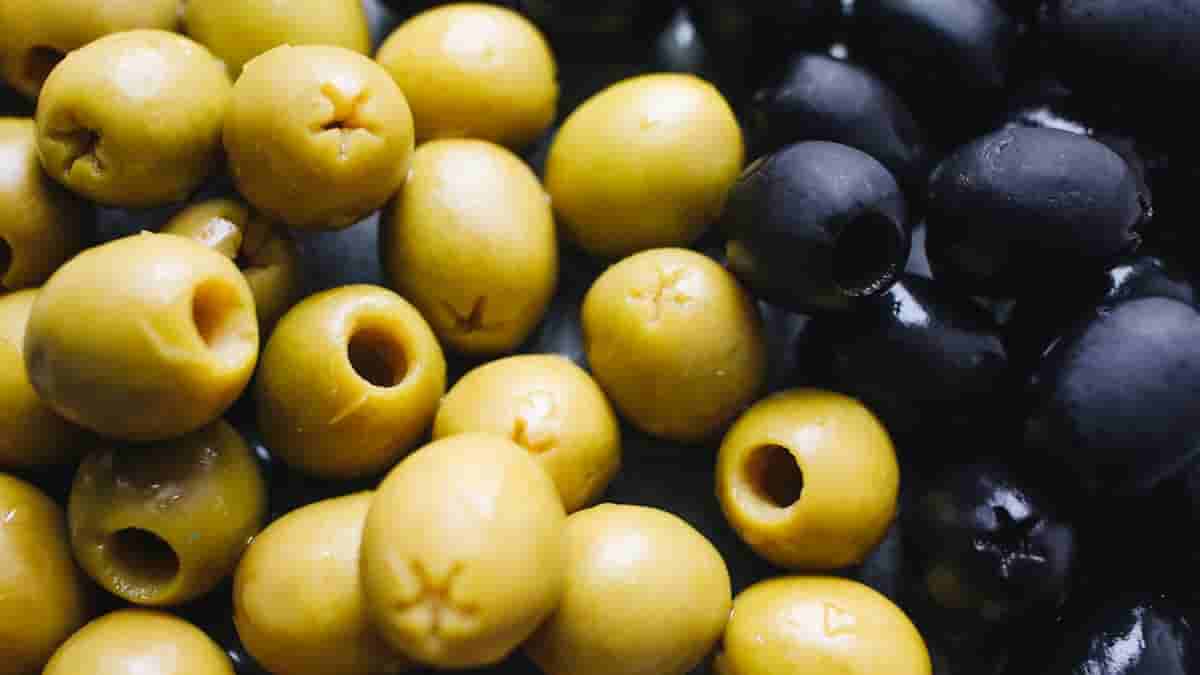
Here is your complete guide to are olives vegetables
Introduction to Are Olives Vegetables
Have you ever wondered, “are olives vegetables?” The answer might surprise you! While olives are often used in savory dishes, they are actually classified as fruits from a botanical perspective. However, in culinary contexts, olives are often considered vegetables due to their savory taste and use in vegetable dishes. In this article, we will explore the botanical and culinary classification of olives, their nutritional value, and their role in the food industry.
What Defines a Vegetable?
- Botanical vs. Culinary Classification: Before we can determine whether olives are vegetables, it’s essential to understand the distinction between botanical and culinary classifications.
- Criteria for Labeling: Vegetables are typically defined by their culinary usage rather than their botanical characteristics. However, certain botanical fruits, like tomatoes and cucumbers, are commonly treated as vegetables in the kitchen.
To better grasp this concept, let’s take a look at the following table:
| Botanical Classification | Culinary Classification |
|---|---|
| Based on plant anatomy | Based on culinary usage |
How Are Olives Vegetables?
Botanical and Culinary Classification
Olives are often a topic of confusion when it comes to their classification as fruits or vegetables. From a botanical perspective, olives are classified as fruits because they develop from the ovary of a flower and contain seeds. This characteristic aligns them with other fruits like cherries and mangoes. However, in culinary contexts, olives are often considered vegetables due to their savory taste and common use in vegetable-based dishes such as salads, pizzas, and sandwiches.
Botanical Classification of Olives
From a scientific standpoint, olives are classified as fruits. This is because they develop from the ovary of a flower and contain seeds. The scientific classification of olives as fruits is based on their reproductive structure, not their taste or use in cooking.
Differences between Fruits and Vegetables
| Fruit | Vegetable |
|---|---|
| Develop from the ovary of a flower | Do not develop from the ovary of a flower |
| Contain seeds | May or may not contain seeds |
| Typically sweet or tart in taste | Typically savory or bitter in taste |
| Examples: apples, bananas, oranges | Examples: broccoli, carrots, lettuce |
Culinary Classification of Olives
Despite their classification as fruits, olives are often considered vegetables in culinary contexts. This is because they have a savory taste and are used in dishes that are traditionally associated with vegetables, such as salads and vegetable platters.
Olives as Vegetables in Culinary Contexts
| Dish | Description |
|---|---|
| Salad | Olives are often used in salads, along with other vegetables |
| Vegetable platter | Olives are a common addition to vegetable platters |
| Pizza | Olives are a popular topping for pizza, which is traditionally considered a vegetable dish |
| Pasta | Olives are often used in pasta dishes, along with other vegetables |
Nutritional Value of Olives
Olives are a nutritious food that provides a range of health benefits. They are high in healthy monounsaturated fats, which can help to reduce cholesterol levels and lower the risk of heart disease. Olives are also a good source of antioxidants, which can help to protect the body against damage from free radicals.
Nutritional Content of Olives
| Nutrient | Amount per 100g |
|---|---|
| Calories | 115 |
| Fat | 11g |
| Saturated fat | 1.5g |
| Monounsaturated fat | 7.5g |
| Polyunsaturated fat | 1g |
| Carbohydrates | 6g |
| Fiber | 3g |
| Protein | 1g |
| Vitamin E | 1.5mg |
| Iron | 0.5mg |
| Calcium | 45mg |
| Magnesium | 11mg |
| Phosphorus | 35mg |
| Potassium | 5mg |
Nutritional Benefits for Fitness
When it comes to fitness and health, olives offer a range of benefits. They are a good source of dietary fiber, iron, copper, and oleate. Olives are low in cholesterol and rich in monounsaturated fats, particularly oleic acid, which is linked to decreased inflammation and a reduced risk of heart disease. These healthy fats can be beneficial for fitness enthusiasts as they provide sustained energy and support overall heart health. Additionally, the antioxidants present in olives, such as polyphenols found in virgin olive oil, can help prevent heart-related diseases and contribute to overall well-being. Incorporating olives into a balanced diet can be a nutritious choice for individuals looking to maintain fitness and overall health.
Role of Olives in the Food Industry
Olives play an important role in the food industry, where they are used in a variety of products, from olive oil to pickled olives. In the food industry, olives are often classified as vegetables due to their savory taste and use in vegetable dishes.
Olives as Vegetables in the Food Industry
| Product | Description |
|---|---|
| Olive oil | Olive oil is made from the fruit of the olive tree, but it is often classified as a vegetable oil due to its savory taste |
| Pickled olives | Pickled olives are a common food product, and they are often classified as a vegetable due to their use in vegetable dishes |
| Olive tapenade | Olive tapenade is a spread made from olives, and it is often classified as a vegetable due to its savory taste |
| Stuffed olives | Stuffed olives are a popular snack food, and they are often classified as a vegetable due to their use in vegetable dishes |
FAQs
Are olives vegetables or fruits?
From a botanical perspective, olives are classified as fruits. However, in culinary contexts, olives are often considered vegetables due to their savory taste and use in vegetable dishes.
Read Also: Slow Carb Recipes.
Why are olives sometimes considered vegetables in culinary contexts?
Olives are sometimes considered vegetables in culinary contexts because they have a savory taste and are used in dishes that are traditionally associated with vegetables, such as salads and vegetable platters.
Read Also: Low Sodium Bread Recipe.
What is the nutritional value of olives compared to vegetables?
Olives are a nutritious food that provides a range of health benefits, including healthy monounsaturated fats and antioxidants. While vegetables are also nutritious, they do not provide the same level of healthy fats as olives.
Read Also: Gluten Free BBQ Sauce.
How are olives classified in the food industry?
In the food industry, olives are often classified as vegetables due to their savory taste and use in vegetable dishes.
Read Also: Gluten Free Corn Flakes.
What are the benefits of consuming olives as part of a balanced diet?
Consuming olives as part of a balanced diet can provide a range of health benefits, including reduced cholesterol levels and protection against damage from free radicals.
Read Also: The Surprising Health Benefit of Celery Tea.
Conclusion
In conclusion, while olives are classified as fruits from a botanical perspective, they are often considered vegetables in culinary contexts due to their savory taste and use in vegetable dishes. Olives are a nutritious food that provides a range of health benefits, including healthy monounsaturated fats and antioxidants. They play an important role in the food industry, where they are used in a variety of products, from olive oil to pickled olives. Whether you consider olives to be fruits or vegetables, there is no denying their unique flavor and nutritional value.
Read Also: Protein Juice.
Nutrition
Protein Juice: Sip Your Way to Strength and Recovery
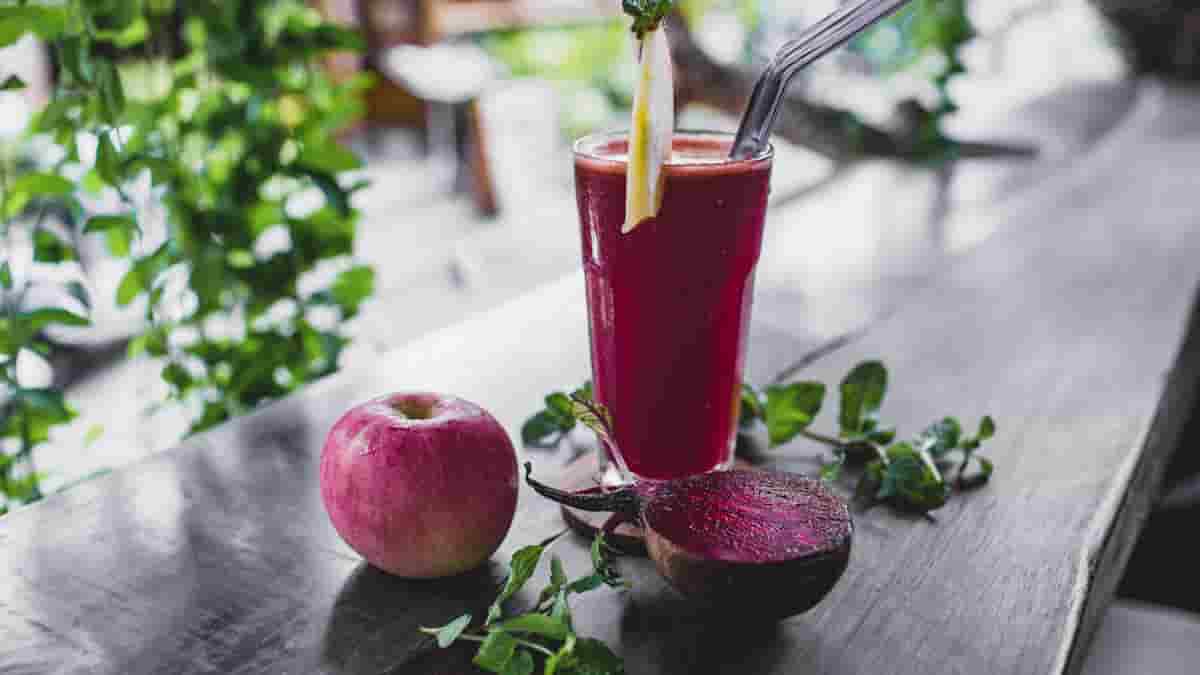
Here is your complete guide to protein juice
Introduction to Protein Juice
Protein Juice is a popular and convenient way to increase protein intake, especially for those with busy lifestyles or fitness enthusiasts. Protein is an essential macronutrient that plays a crucial role in muscle growth, repair, and overall health. This article explores the top 10 protein juice recipes, nutritional value, DIY vs. store-bought options, and the impact of protein juice on fitness and weight loss.
What is Protein Juice?
- Protein juice is a specialized beverage that combines the nutritional benefits of protein with the refreshing taste of fruit juice.
- Unlike traditional fruit juices, juice is fortified with high-quality protein sources such as whey, pea, or soy protein.
- This unique combination provides a convenient way to increase your protein intake while enjoying a delicious drink.
Top 10 Protein Juice Recipes
1. Chocolate Peanut Butter Banana Protein Shake
- 1 scoop of Chocolate Whey Protein Isolate
- 1/2 cup of water
- 1/2 cup of almond milk
- 1 tbsp of peanut butter
- 1 sprinkle of cinnamon
- 1 frozen banana
- 1/2 cup of ice
- 1/4 cup of Greek yogurt (optional)
2. Red Velvet Raspberry Protein Shake
- 1 scoop of Chocolate or Red Velvet Whey Protein Isolate
- 1/2 cup of water
- 1/2 cup of oat milk or dairy milk
- 1/2 cup of frozen raspberries
- 1 tbsp of cocoa powder
- 1/2 cup of ice
- 1/4 cup of Greek yogurt (optional)
3. Blueberry Cobbler Protein Shake
- 1 scoop of Vanilla Whey Protein Isolate
- 1/2 cup of water
- 1/2 cup of almond, oat, or dairy milk
- 1/2 cup of frozen or fresh blueberries
- 1 sprinkle of cinnamon
- 1/2 cup of ice
- 1/4 cup of Greek yogurt (optional)
4. Honey Cinnamon Almond Protein Shake
- 1 scoop of Vanilla or Honey Cinnamon Peanut Butter Whey Protein Isolate
- 1 scoop of Collagen Protein
- 1/2 cup of water
- 1/2 cup of almond milk
- 1 sprinkle of cinnamon
- 1/2 cup of ice
5. Strawberry Dream Protein Shake
- 1 scoop of Vanilla Whey Protein Isolate
- 1 scoop of Collagen Protein
- 1/2 cup of water
- 1/2 cup of almond, oat, or dairy milk
- 1/2 cup of frozen or fresh strawberries
- 1/2 cup of ice
- 1/4 cup of Greek yogurt (optional)
6. Mint Chocolate Chip Ice Cream Protein Shake
- 1 scoop of Chocolate or Mint Chocolate Chip Whey Protein Isolate
- 1 scoop of Collagen Protein
- 1/2 cup of water
- 1/2 cup of almond milk
- 1/2 cup of ice
- 1/4 cup of Greek yogurt (optional)
- 1 tbsp of mini chocolate chips
7. Berry Blast Protein Shake
- 1 scoop of Vanilla Whey Protein Isolate
- 1 scoop of Collagen Protein
- 1/2 cup of water
- 1/2 cup of almond, oat, or dairy milk
- 1/2 cup of frozen mixed berries
- 1/2 cup of ice
- 1/4 cup of Greek yogurt (optional)
8. Mango Madness Protein Shake
- 1 scoop of Vanilla Whey Protein Isolate
- 1 scoop of Collagen Protein
- 1/2 cup of water
- 1/2 cup of almond, oat, or dairy milk
- 1/2 cup of frozen or fresh mango
- 1/2 cup of ice
- 1/4 cup of Greek yogurt (optional)
9. Brown Sugar Cinnamon (Snickerdoodle) Oatmeal Protein Shake
- 1 scoop of Vanilla or Honey Cinnamon Peanut Butter Whey Protein Isolate
- 1 scoop of Collagen Protein
- 1/2 cup of clean carbs or steel-cut oats
- 1/2 cup of water
- 1/2 cup of oat milk
- 1 sprinkle of cinnamon
- 1/2 cup of ice
- 1/4 cup of Greek yogurt (optional)
10. Pumpkin Spice Protein Shake
- 1 scoop of Vanilla Whey Protein Isolate
- 1 scoop of Collagen Protein
- 1/2 cup of water
- 1/2 cup of almond milk
- 1/2 cup of pumpkin puree
- 1/2 cup of ice
- 1/4 cup of Greek yogurt (optional)
- 1 tbsp of pumpkin spice
These protein shake recipes offer a variety of flavors and ingredients to suit different tastes and dietary preferences. They are perfect for post-workout recovery, meal replacements, or a quick snack. Enjoy experimenting with these recipes and finding your favorite combinations.
Nutrition Facts of Protein Juice
| Nutrient | Orange Juice (1 cup) | Strawberry Juice (1 glass) |
|---|---|---|
| Calories | 110 | 95 |
| Fat (g) | 0 | 2 |
| Carbohydrates (g) | 27 | 20 |
| Fiber (g) | 1 | N/A |
| Sugars (g) | 20 | N/A |
| Protein (g) | 2 | 1 |
| Vitamin C (mg) | 60 | N/A |
| Vitamin A (IU) | 101 | N/A |
| Calcium (mg) | 40.8 | N/A |
This table compares the nutritional content of orange juice and strawberry juice per serving. Orange juice provides more calories, vitamin C, and calcium compared to strawberry juice, while strawberry juice contains more fat.
DIY Protein Juice vs. Store-Bought Options
Cost Comparison
DIY protein juice is generally more cost-effective than store-bought options. Here’s a table comparing the cost of ingredients for a homemade protein shake and a store-bought protein shake.
| Ingredient | DIY Protein Juice (per serving) | Store-Bought Protein Shake (per serving) |
|---|---|---|
| Protein Powder | $0.75 | $1.50 |
| Fruits and Vegetables | $0.50 | N/A |
| Liquid | $0.25 | N/A |
| Total | $1.50 | $1.50 |
Ingredient Quality
DIY protein juice allows for greater control over the quality of ingredients used. Store-bought options may contain added sugars, preservatives, and artificial flavors.
Freshness and Preservatives
DIY protein juice is fresher and free from preservatives, ensuring maximum nutritional benefits.
Protein Juice for Fitness and Weight Loss
It can be beneficial for both fitness and weight loss. Here’s a table comparing the pre-workout and post-workout benefits.
| Benefit | Pre-Workout | Post-Workout |
|---|---|---|
| Energy | Increased | Restored |
| Muscle Growth | Enhanced | Supported |
| Muscle Recovery | N/A | Accelerated |
| Weight Management | Supported | Supported |
Protein Juice and Health Benefits
It offers various health benefits, including boosting immunity, supporting digestive health, and enhancing energy levels. Here’s a table summarizing the health benefits.
| Health Benefit | Description |
|---|---|
| Boosting Immunity | Protein helps support the immune system by producing antibodies |
| Supporting Digestive Health | Fiber in protein juice supports healthy digestion |
| Enhancing Energy Levels | Protein helps maintain energy levels throughout the day |
FAQs
How much protein should be in a protein juice?
Aim for at least 20 grams of protein per serving.
Read Also: Chest Exercise Machine.
Can protein juice replace a meal?
It can be used as a meal replacement, but it should be supplemented with other nutrients for a balanced diet.
Read Also: Slow Carb Recipes.
Is protein juice suitable for vegetarians?
Yes, it can be made with plant-based protein powders.
Read Also: Low Sodium Bread Recipe.
Are there any side effects of consuming protein juice?
Excessive protein intake may lead to dehydration, kidney damage, and digestive issues.
Read Also: Gluten Free BBQ Sauce.
How to choose the best protein powder for protein juice?
Look for high-quality protein powders with minimal additives and artificial flavors.
Read Also: The Surprising Health Benefit of Celery Tea.
Conclusion
Protein juice is a convenient and nutritious way to increase protein intake, offering various health benefits and supporting fitness and weight loss goals. By understanding the nutritional value, cost, and quality differences between DIY and store-bought options, consumers can make informed decisions about their juice choices. Always consult a healthcare professional for personalized dietary recommendations.
Read Also: Gluten Free Corn Flakes.
Nutrition
Gluten Free Corn Flakes: Discover Your Crispy Breakfast Delight!
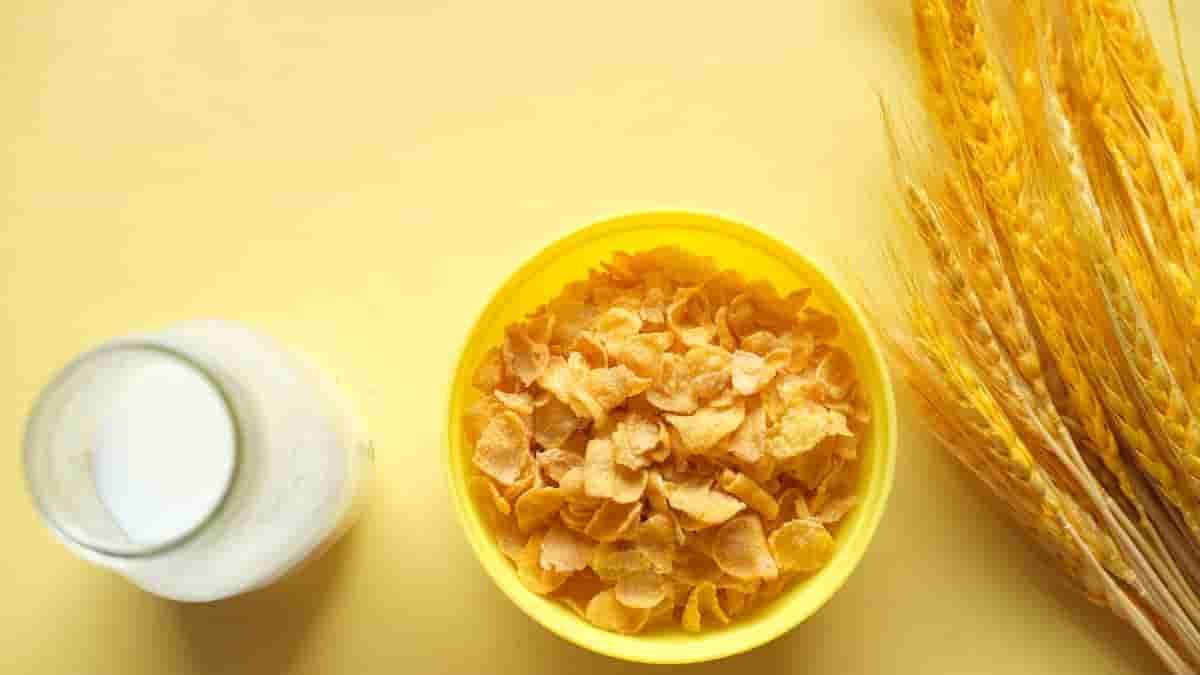
Here is your complete guide to gluten free corn flakes
Introduction to Gluten Free Corn Flakes
Gluten-free diets have gained widespread popularity in recent years, and for good reason. For individuals with gluten sensitivities or celiac disease, avoiding gluten is crucial for their health and well-being. Corn flakes, a beloved breakfast cereal, have also seen a surge in demand for gluten-free variations. In this article, we will delve into the world of gluten free corn flakes, exploring their history, nutritional value, production process, and the top brands available in the market.
History of Corn Flakes
Corn flakes, as we know them today, were first introduced in the late 19th century by the Kellogg brothers. Over time, corn flakes have evolved into a popular breakfast staple, enjoyed by millions around the world. With the growing awareness of gluten-related disorders, manufacturers have started offering gluten-free alternatives to cater to a wider audience.
Nutritional Value of Gluten-Free Corn Flakes
When comparing traditional corn flakes to their gluten-free counterparts, the nutritional content remains relatively similar. However, corn flakes offer some unique advantages. They are often fortified with additional vitamins and minerals, making them a nutritious choice for those following a gluten-free diet. Here’s a table comparing the nutritional value of two popular brands:
| Nutrient | Brand A (per 100g) | Brand B (per 100g) |
|---|---|---|
| Energy (kcal) | 372 | 367 |
| Protein (g) | 8.6 | 9.8 |
| Carbohydrates (g) | 81.4 | 80.5 |
| Sugars (g) | 4.5 | 4.2 |
| Fat (g) | 1.3 | 1.0 |
| Fiber (g) | 2.1 | 2.6 |
| Calcium (mg) | 348 | 292 |
| Iron (mg) | 10.2 | 13.1 |
Production Process
The production process of corn flakes is similar to that of traditional corn flakes, with a few key differences. Manufacturers must use gluten-free ingredients and follow strict protocols to prevent cross-contamination. Here’s an overview of the production process:
- Corn sourcing: Gluten-free corn is sourced from certified gluten-free farms.
- Cleaning and grinding: The corn is cleaned and ground into a fine meal.
- Cooking: The corn meal is cooked with water and sugar, forming a thick mixture.
- Flaking: The cooked mixture is rolled into thin flakes and toasted.
- Packaging: The corn flakes are packaged in dedicated gluten-free facilities.
Benefits of Gluten-Free Corn Flakes
They offer numerous health benefits for individuals with gluten sensitivities or celiac disease. Here are some of the key advantages:
- Improved digestion: Corn flakes are easier to digest, reducing the risk of digestive discomfort.
- Reduced inflammation: Eliminating gluten can help reduce inflammation in the body, particularly in the gut.
- Increased energy: Corn flakes are often fortified with vitamins and minerals, providing a nutrient-dense breakfast option.
- Weight management: They can be a part of a balanced diet, helping to maintain a healthy weight.
How to Choose the Best Corn Flakes
When selecting corn flakes, there are several factors to consider. Here are some tips to help you make an informed decision:
- Read labels: Always read the ingredient list to ensure the product is gluten-free.
- Look for certifications: Seek out products with gluten-free certifications, such as the Gluten-Free Certification Organization (GFCO).
- Check for allergens: Ensure the product does not contain any other allergens that may affect you.
- Compare prices: Look for the best value for your money, considering both price and nutritional content.
Corn Flakes Recipes
They can be used in a variety of recipes, from breakfast to desserts. Here are some ideas to get you started:
- Breakfast: Top your corn flakes with fresh fruit, nuts, and a dollop of yogurt.
- Snacks: Create a sweet and salty trail mix by combining corn flakes, nuts, dried fruit, and a sprinkle of sea salt.
- Desserts: Use corn flakes as a crunchy topping for fruit crumbles or pie.
How to Make Gluten-Free Corn Flakes at Home
If you’re looking for a healthier alternative to store-bought corn flakes or simply want to avoid gluten, making your own corn flakes at home is a great option. In this article, we will guide you through the process of making your own corn flakes using a simple recipe.
Recipe for Corn Flakes
The following recipe is from2 and is a great starting point for making your own corn flakes at home.
Ingredients
- Medium or fine cornmeal (ensure it is certified gluten-free)
- Water
- Sugar (optional)
Instructions
- Distribute cornmeal: Evenly distribute the cornmeal in an ungreased metal skillet.
- Add water: Spray or sprinkle the cornmeal with an even distribution of water, ensuring it is soaked.
- Cook: Cook the cornmeal over medium heat until most of the water has evaporated.
- Scrape: Use a metal spatula to scrape the bottom of the pan until the flakes start coming off.
- Flip: Flip the flakes over and continue cooking until they dry out.
- Break apart: Break apart any chunks with your hands.
Optional Steps
- Toast: To add more crunch, you can toast the flakes in the oven at a low temperature.
- Sweeten: If you prefer sweetened corn flakes, sprinkle a small dusting of sugar over the cornmeal before cooking.
Tips for Making Corn Flakes
- Use certified gluten-free cornmeal: To ensure your corn flakes are truly gluten-free, use certified gluten-free cornmeal.
- Monitor cooking time: Keep a close eye on the cornmeal as it cooks to prevent burning.
- Adjust sweetness: Add more or less sugar to suit your taste preferences.
Benefits of Making Corn Flakes at Home
- Control over ingredients: By making your own corn flakes, you have complete control over the ingredients used.
- Avoid gluten: Making your own corn flakes at home ensures they are gluten-free, which is essential for those with celiac disease or gluten sensitivity.
- Reduce processed foods: Making your own corn flakes reduces your reliance on processed foods and allows you to create a healthier breakfast option.
Top 10 Brands
| Brand | Description |
|---|---|
| Barbara’s Bakery Corn Flakes | Gluten-free and safe for individuals with celiac disease. |
| Erewhon Corn Flakes | Labeled gluten-free and made with quality ingredients. |
| Health Valley – Blue Corn Flakes | Blue corn flakes that are gluten-free and nutritious. |
| Nature’s Path Corn Flakes | A trusted brand offering corn flakes. |
| Nature’s Path Honey’d Corn Flakes | Gluten-free corn flakes with a touch of honey. |
| Nature’s Path EnviroKidz Amazon Flakes | Fun and flavorful corn flakes for kids. |
| Kellogg’s Corn Flakes | Not gluten-free due to malt flavoring derived from barley. |
| Blueberry Pecan Granola | A delicious gluten-free breakfast option. |
| Crunchy Maple Sunrise | Maple-flavored gluten-free cereal for a tasty start to the day. |
| EnviroKidz Panda Puffs | Fun and gluten-free puffs for a delightful breakfast experience. |
FAQs
Are gluten-free corn flakes more expensive than traditional corn flakes?
While some brands may be pricier, there are budget-friendly options available.
Can I eat gluten-free corn flakes if I don’t have celiac disease or a gluten sensitivity?
Yes, Corn flakes can be part of a balanced diet for anyone.
Read Also: Chest Exercise Machine.
How do I know if a product is truly gluten-free?
Look for gluten-free certifications and read the ingredient list carefully.
Read Also: Slow Carb Recipes.
Can I use gluten-free corn flakes in regular recipes?
Absolutely! Corn flakes can be used as a substitute in most recipes.
Read Also: Low Sodium Bread Recipe.
Are gluten-free corn flakes healthier than traditional corn flakes?
They can be just as nutritious as traditional corn flakes, and sometimes even more so due to added vitamins and minerals.
Read Also: The Surprising Health Benefit of Celery Tea.
Conclusion
Gluten-free corn flakes offer a delicious and nutritious breakfast option for those following a gluten-free diet. With a wide variety of brands and recipes available, incorporating gluten-free corn flakes into your diet has never been easier. By understanding the history, production process, and benefits of corn flakes, you can make informed choices and enjoy a tasty and healthy breakfast.
Read Also: Gluten Free BBQ Sauce.
-

 Nutrition1 year ago
Nutrition1 year agoThe Nutritional Benefits of Eating Dates
-

 Exercise1 year ago
Exercise1 year agoBest Exercises For Bicep: Your Complete Guide
-

 Fitness1 year ago
Fitness1 year agoAbs Workout for Beginner: Your Ultimate Guide!
-

 Fitness1 year ago
Fitness1 year agoHow Many Calories Are in a Potato? Nutrition Facts
-

 Nutrition12 months ago
Nutrition12 months agoNutrition Facts Of Strawberries: Your Ultimate Guide
-

 fitness diet1 year ago
fitness diet1 year agoWhat Is The Effects of Sugar on Your Body?
-

 fitness diet1 year ago
fitness diet1 year agoFast Food That’s Gluten Free: Your Complete Guide
-

 Exercise12 months ago
Exercise12 months agoWarmup for Back Workout: Your Complete Guide

